Make this sweet and gooey Greek-inspired Easy Baklava Recipe that's a rich pastry with flaky layers of buttery phyllo dough, chopped walnuts, and a deliciously sweet and sticky syrup mixture.
If you're craving even more tasty and delicious recipes with Greek flavors, then be sure to try making some Greek Potatoes, a Greek Chicken Salad, and Spicy Chickpea Gyros.
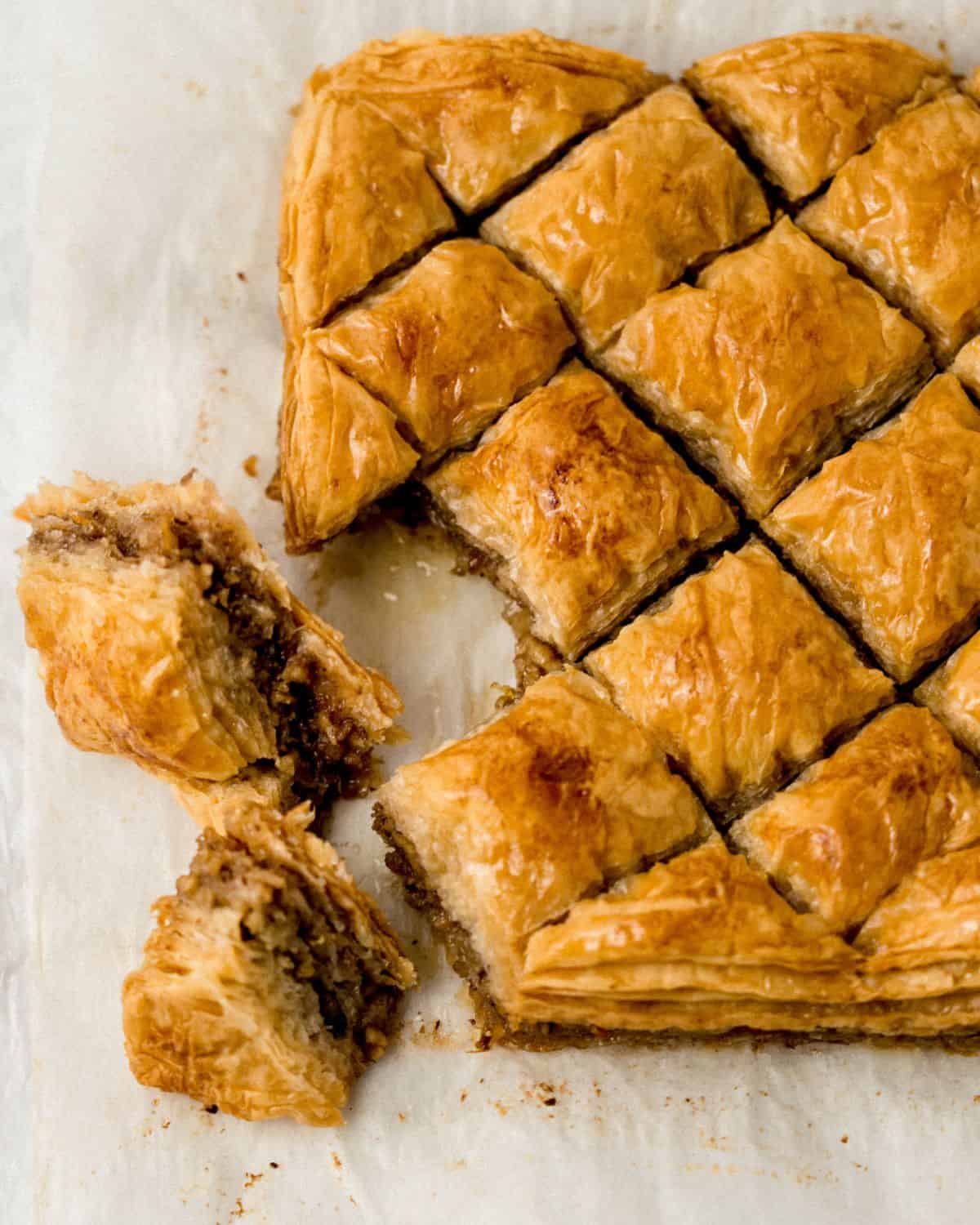
The first time that I tasted baklava was as a student in college at Florida State University. There was a Greek restaurant that was close to campus and I would walk there for lunch to grab the most delicious gyro and spanakopita.
It was my introduction to Greek-inspired food. On one trip someone suggested that I give the baklava a try for dessert. It was made with sticky layers of flaky dough with nuts piled on top of each other. The most delicious treat I'd ever tried. I was hooked.
Of course, I learned how to make it my way at home and I'll share my non-authentic version with you today. I hope that you get a chance to give it a try.
Let's get started!
Baklava Ingredients You'll Need
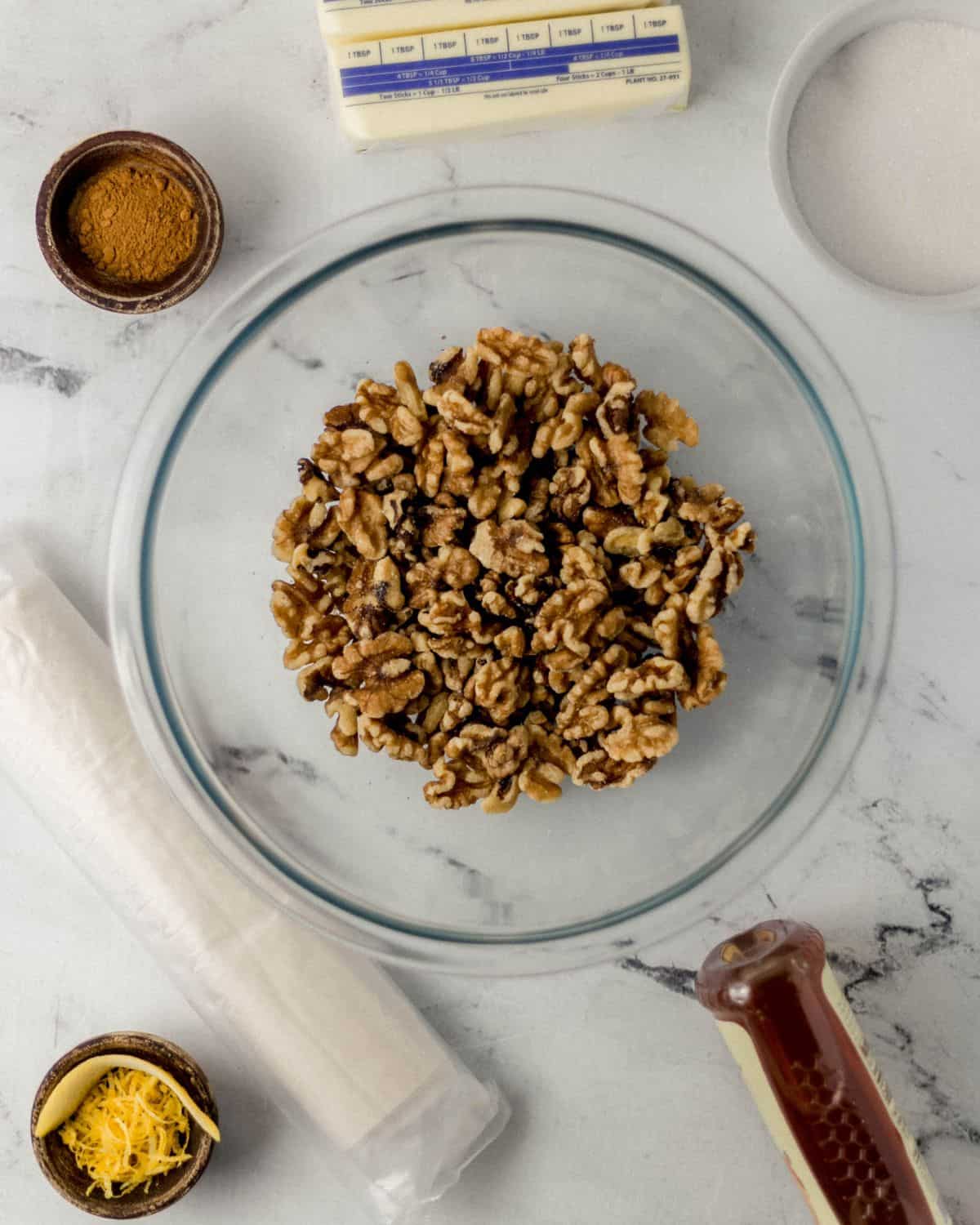
- Walnuts - Use raw unsalted walnuts for this dessert recipe. Traditionally walnuts are used to make Greek Baklava, but if you prefer to use another type of nut, then you may do so. Pecans, pistachios, almonds, or a combination will also work. Just be sure to process (chop) them down to about the size of a pea or smaller.
- Sugar - Granulate white sugar is needed to sweeten the baklava. It's combined with the nut mixture and used to make a simple syrup to top the baked baklava. Cane sugar or light brown sugar may be used instead.
- Ground Cinnamon - Adds a nice warm spice flavor to the nut mixture.
- Lemon Juice & Zest/Rind - This recipe needs a large lemon or two smaller lemons. The juice and rind are added to the simple syrup mixture and the zest is added to the nut mixture. This ingredient helps to balance some of the sweetness with a fresh kick of acid for some tangy flavor.
- Phyllo Dough - Can be located in the frozen pastry freezer section of the grocery store. Usually comes in a one-pound box, but for this recipe, you'll only need one roll/half a pound. Allow it to thaw before using. This dough is very thin sheets, so be careful (gentle) when working with it. Also, try to keep it covered with a clean and damp kitchen towel or paper towel to prevent it from drying out and cracking.
- Butter - A half cup of melted butter is needed for this recipe. You may use salted or unsalted, whichever you prefer. I like to melt the butter in a small bowl in the microwave for a few seconds. During the process, if you notice the butter cool and begin to solidify, then it's best to warm it again.
- Honey - Add to the syrup mixture at the end. The key ingredient to making baklava sticky and sweet.
See the recipe card below for exact ingredient quantities and instructions.
How to Make Baklava From Scratch
Begin the recipe by preheating the oven to 325 degrees F. Line a square 8x8-inch baking pan with parchment paper. Do not skip this step as it will be much easier to remove the sticky baklava from the pan before serving.
Using a food processor add in the walnuts and process them until they are about the size of a pea or smaller. Add the chopped walnuts to a large mixing bowl along with the granulated sugar, ground cinnamon, and lemon zest. Stir to combine.
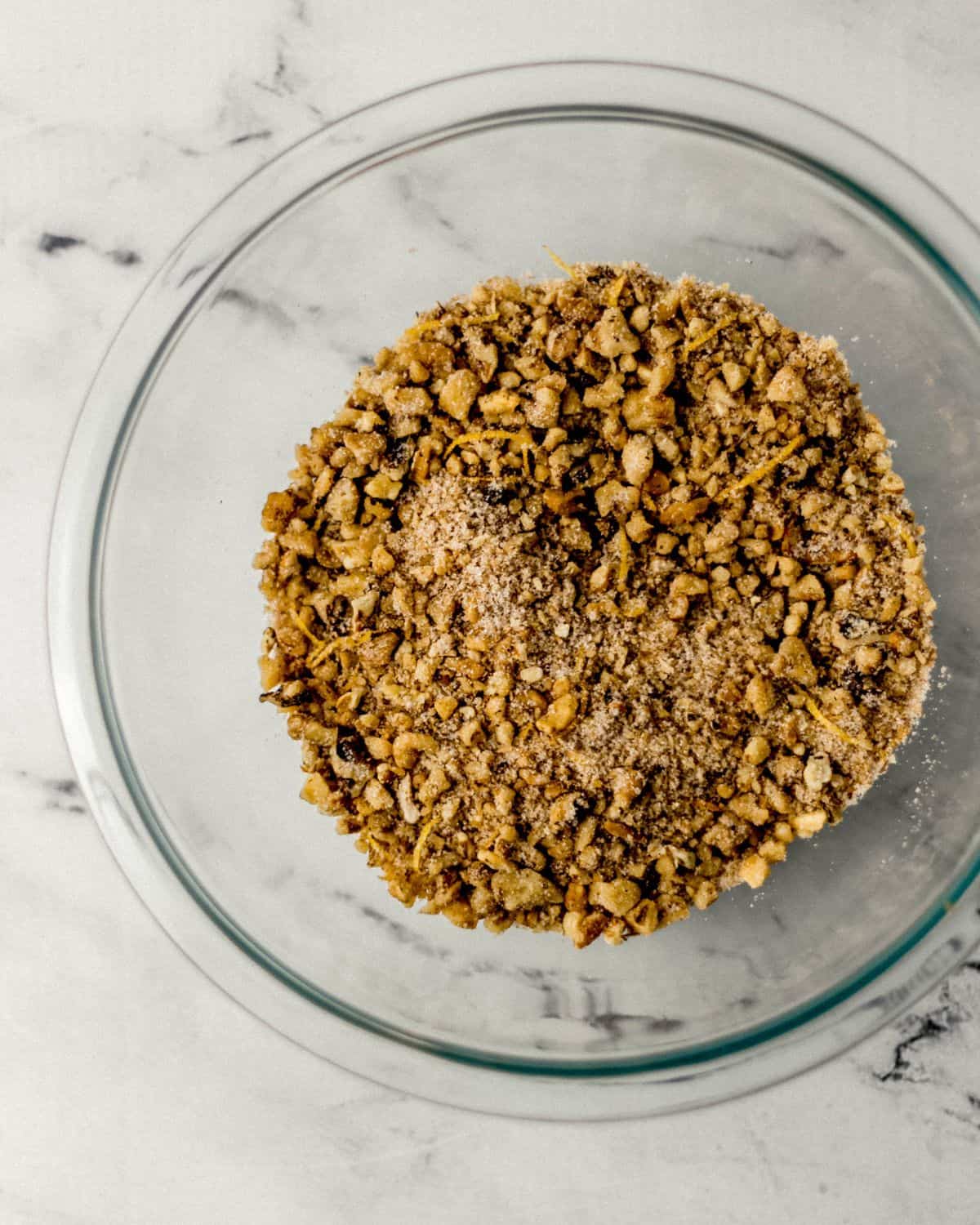
Melt the butter and brush the parchment paper in the square baking dish with a thin layer of the melted butter. Grab two sheets of phyllo dough and lay them on the bottom of the baking dish. Fold and tuck the layers of phyllo dough to fit, it is fine for the dough to overlap on top of itself.
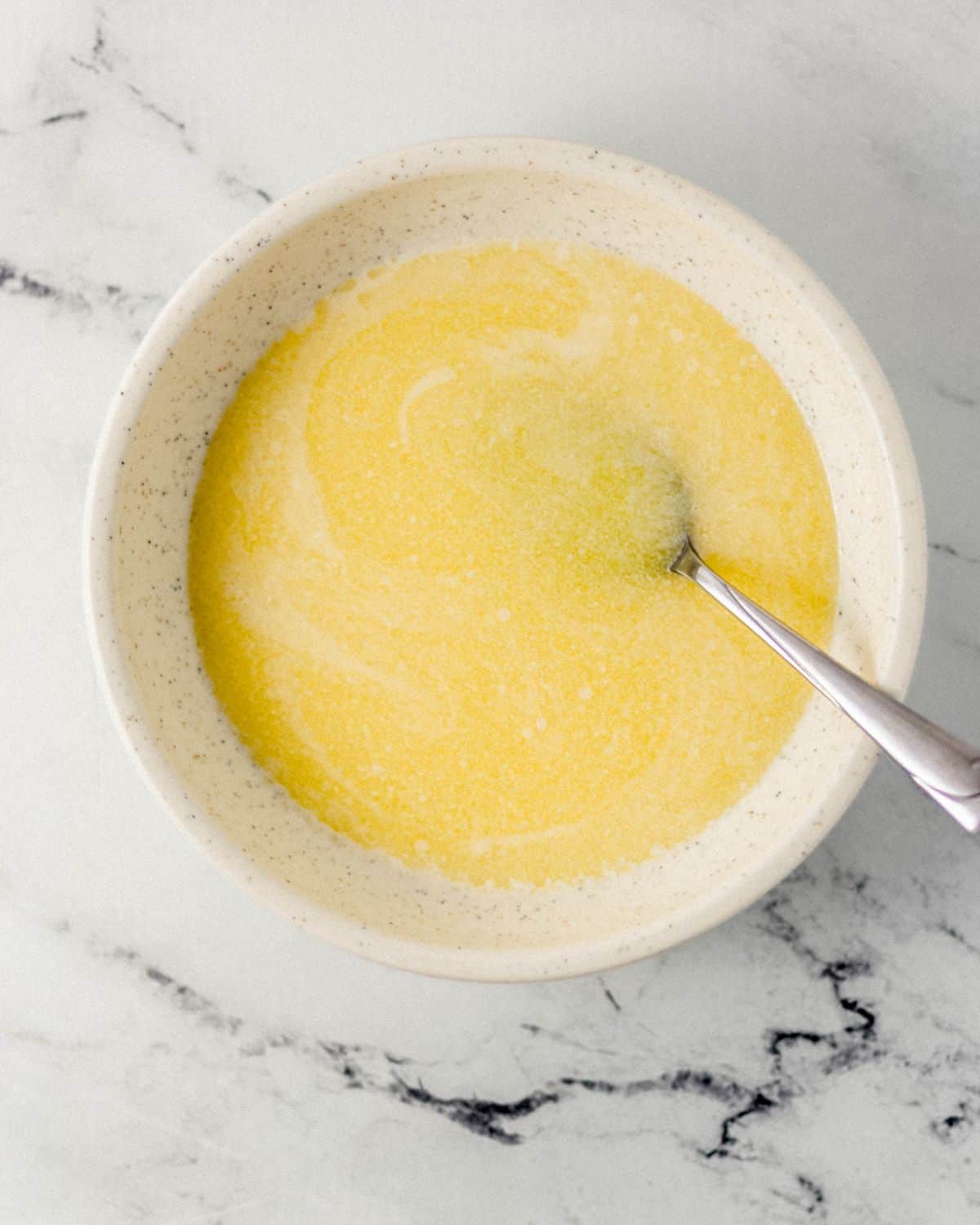
Generously tap the edge of the dough with some melted butter, followed by the ends of the overlapping dough. This will prevent the dough from sliding around in the pan. Then brush the entire dough with melted butter before adding 2 more sheets of phyllo dough.
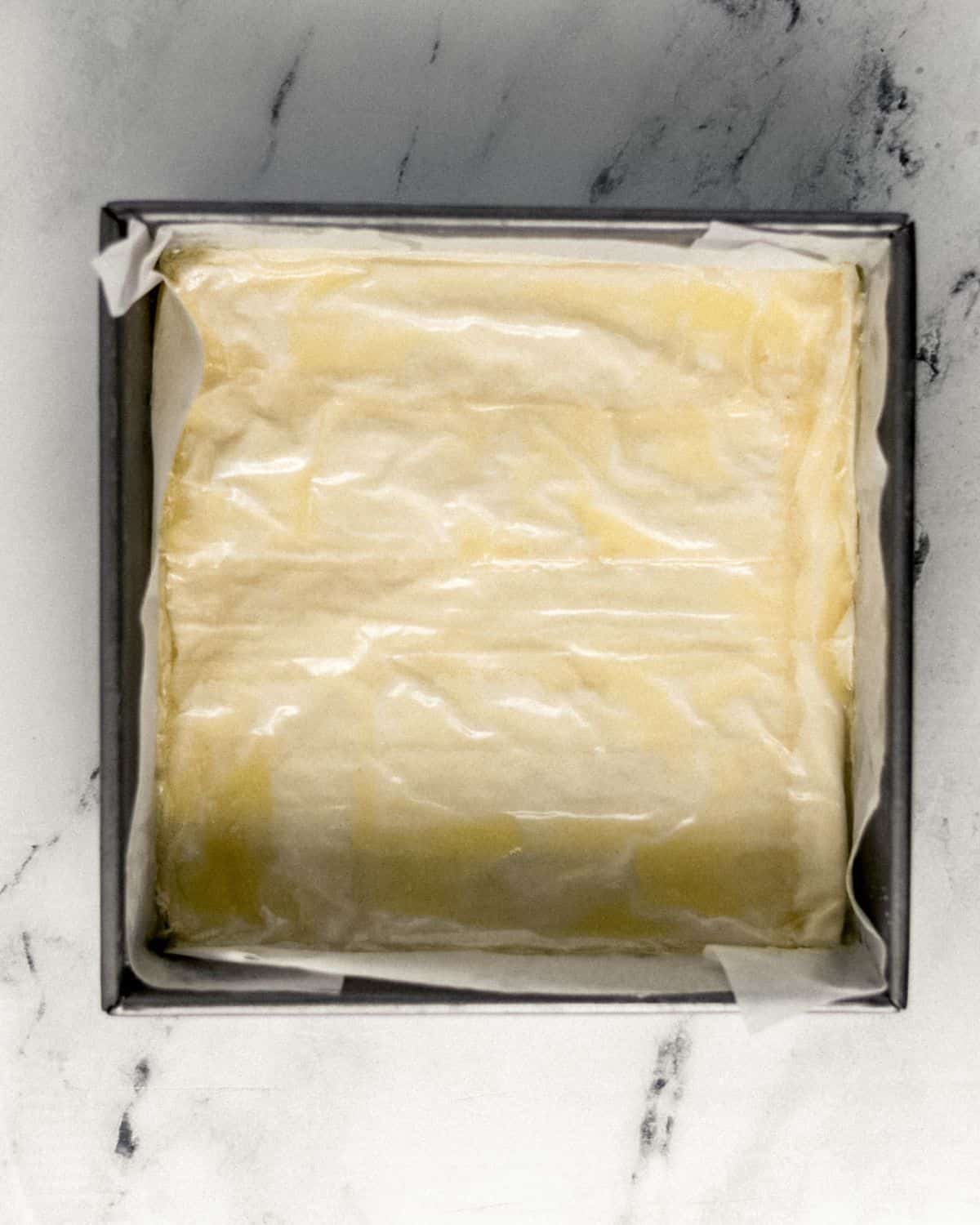
Fold and tuck the dough to fit in the pan, brush the edges and ends with butter, and brush the entire dough with melted butter. Add 2 more sheets of phyllo dough and repeat the process with the butter again.
Followed by dough and butter until up have layered 10 to 12 sheets on top of each other. Sprinkle the top of the buttered dough evenly with ⅓ of the nut mixture.
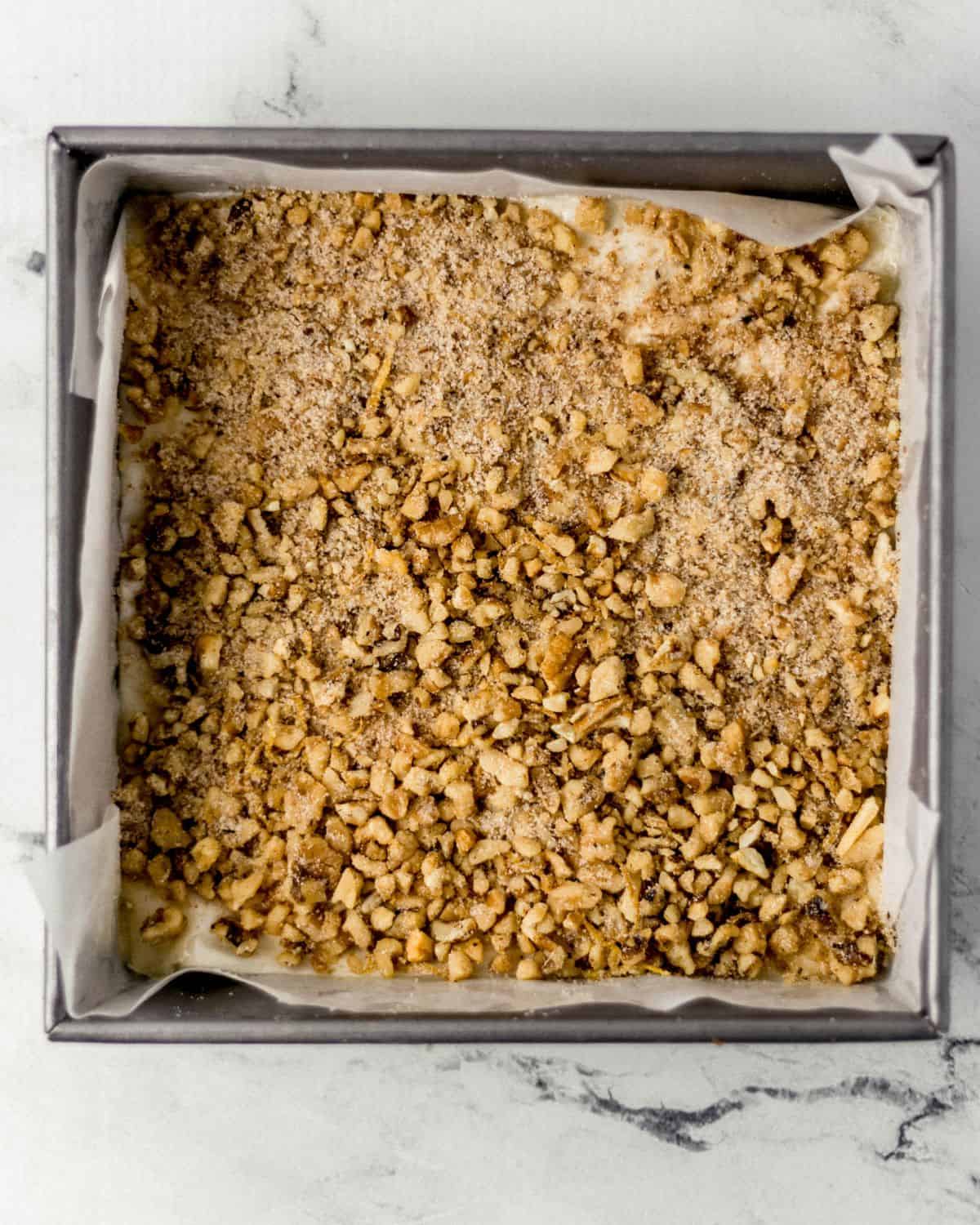
Place 2 sheets of phyllo dough on top of the nut mixture and brush with melted butter. Add ½ of the nut mixture evenly on top of the buttered dough. Add 2 sheets of top, brush with butter, and add the last half of the nut mixture evenly on top.
Top with 2 sheets of phyllo pastry followed by brushing on a layer of melted butter. Continue this process of layering 2 dough sheets, followed by brushing with melted butter, until you have no more phyllo dough sheets or butter left. End the process with the last of the butter evenly spread over the top.
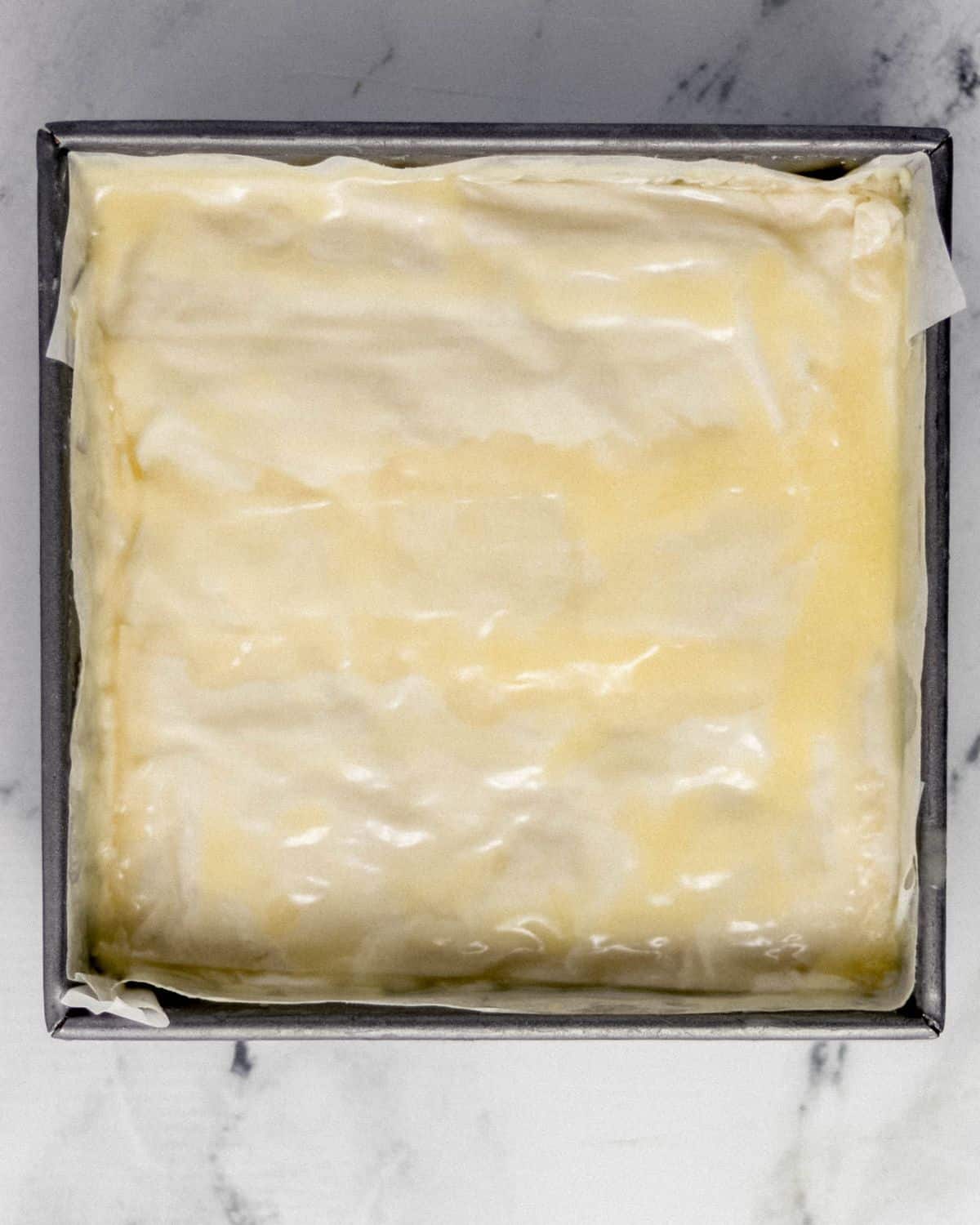
Using a sharp knife cut the baklava into small diamond shapes. It is important to cut the baklava before baking to make the process easier and for the syrup to get into all of the nooks and crannies. If you're unable to cut all the way down to the bottom, no worries getting halfway through is good enough!
Want To Save This Recipe?
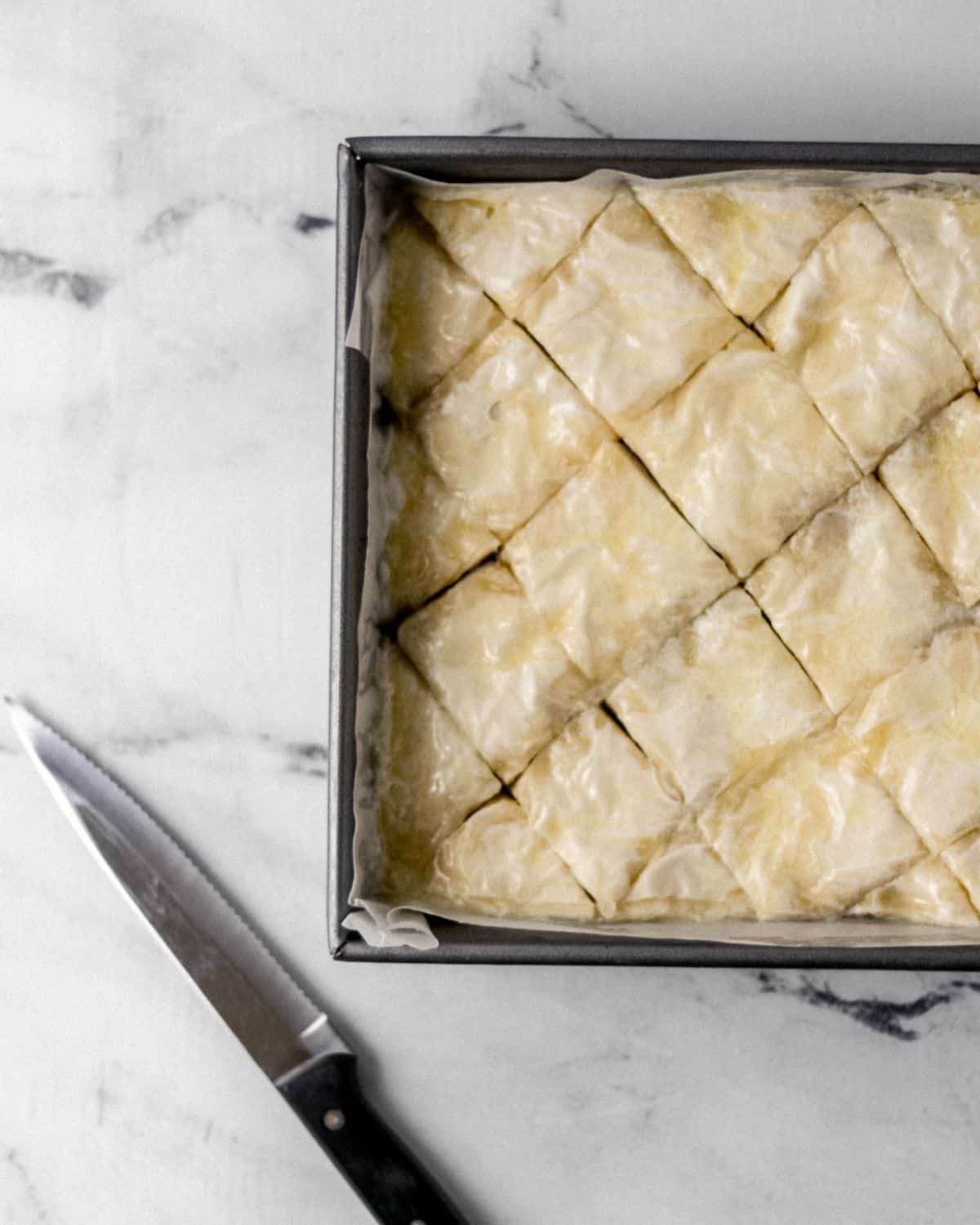
Place the baklava into the oven to bake for 25 to 30 minutes. It should be puffy and golden brown. Lower the heat to 300 degrees F. and continue baking for an additional 45 minutes.
After 45 minutes, bake the baklava for another 15 minutes. Begin making the syrup mixture using a small saucepan on the stovetop over medium-high heat. Add the water, granulated sugar, lemon juice, and lemon rind. Stir to combine.
Allow the mixture to come to a boil, reduce the heat to medium-low, and allow it to simmer for 10 minutes. Stir in the honey and allow it to continue to simmer for 5 more minutes.
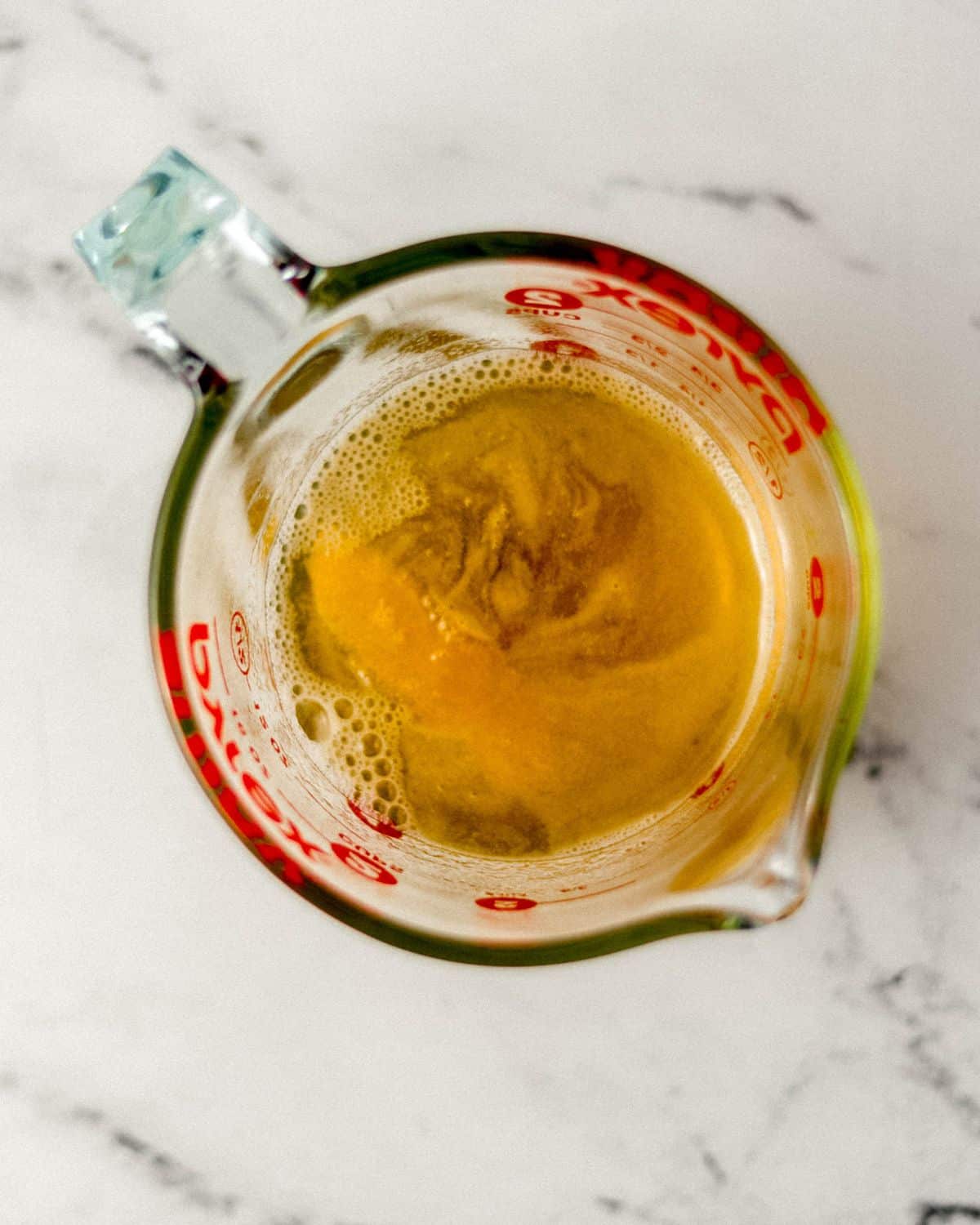
Carefully remove the baklava from the oven after baking it for 1 hour and 30 minutes total. It should be puffy and lightly browned.
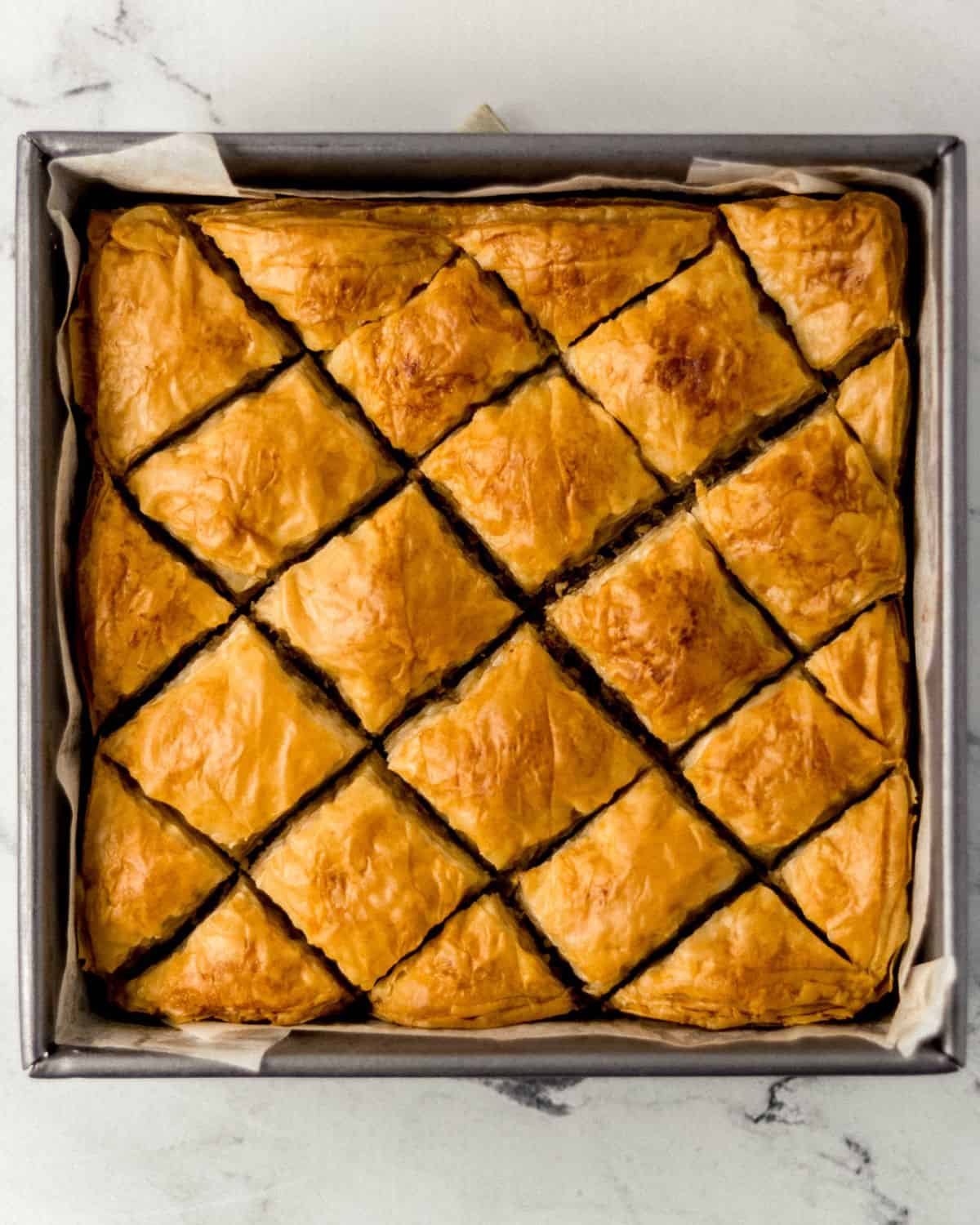
Remove the lemon rind from the syrup mixture. Evenly pour the hot honey syrup over the top of the hot baklava. Allow it to cool to room temperature before placing it into the refrigerator to cool overnight or for at least 3 to 4 hours. Remove the baklava from the fridge.
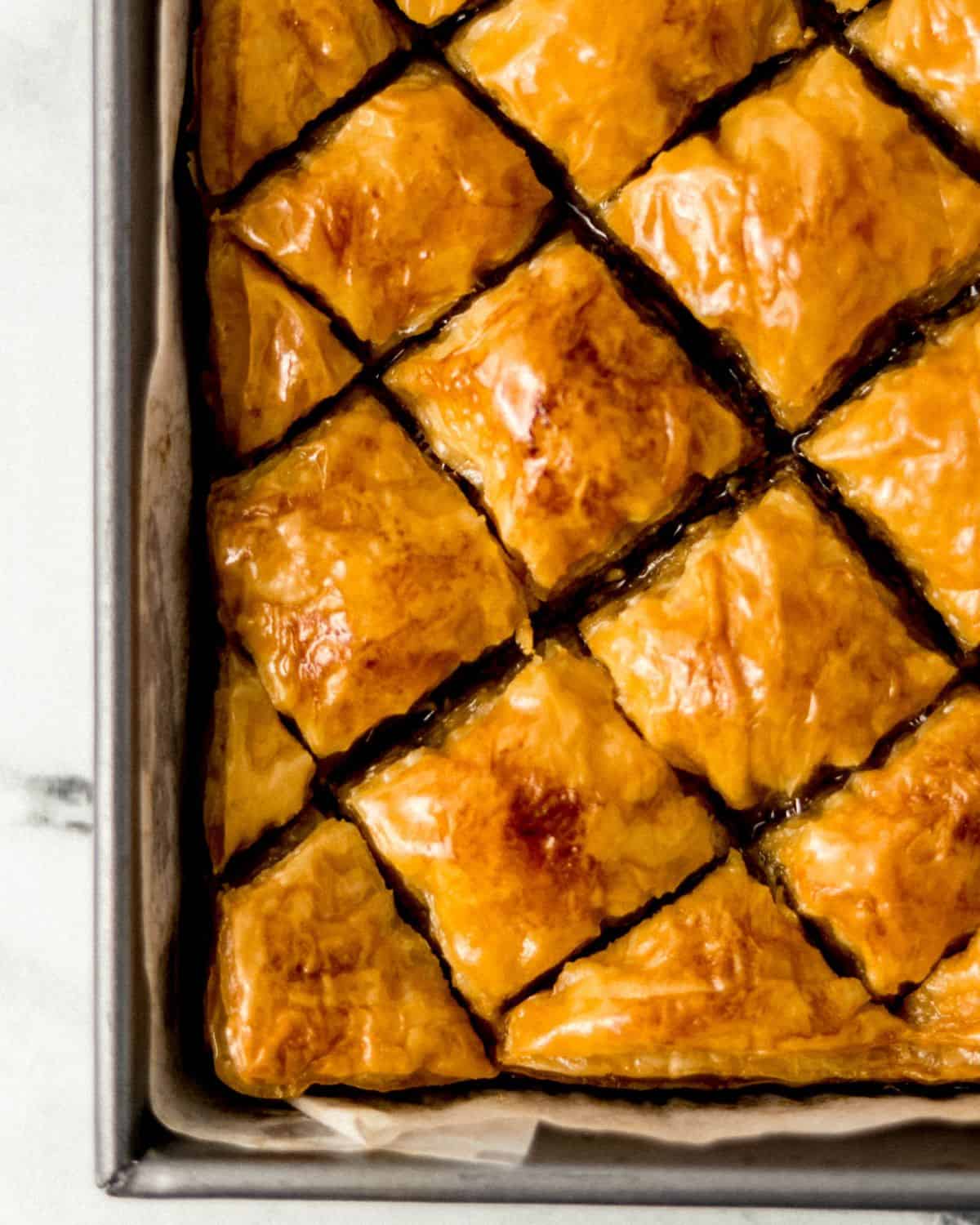
Use the edges of the parchment paper to remove the baklava from the baking pan. Grab a knife and finish cutting the baklava all the way down to the bottom. Serve and enjoy!
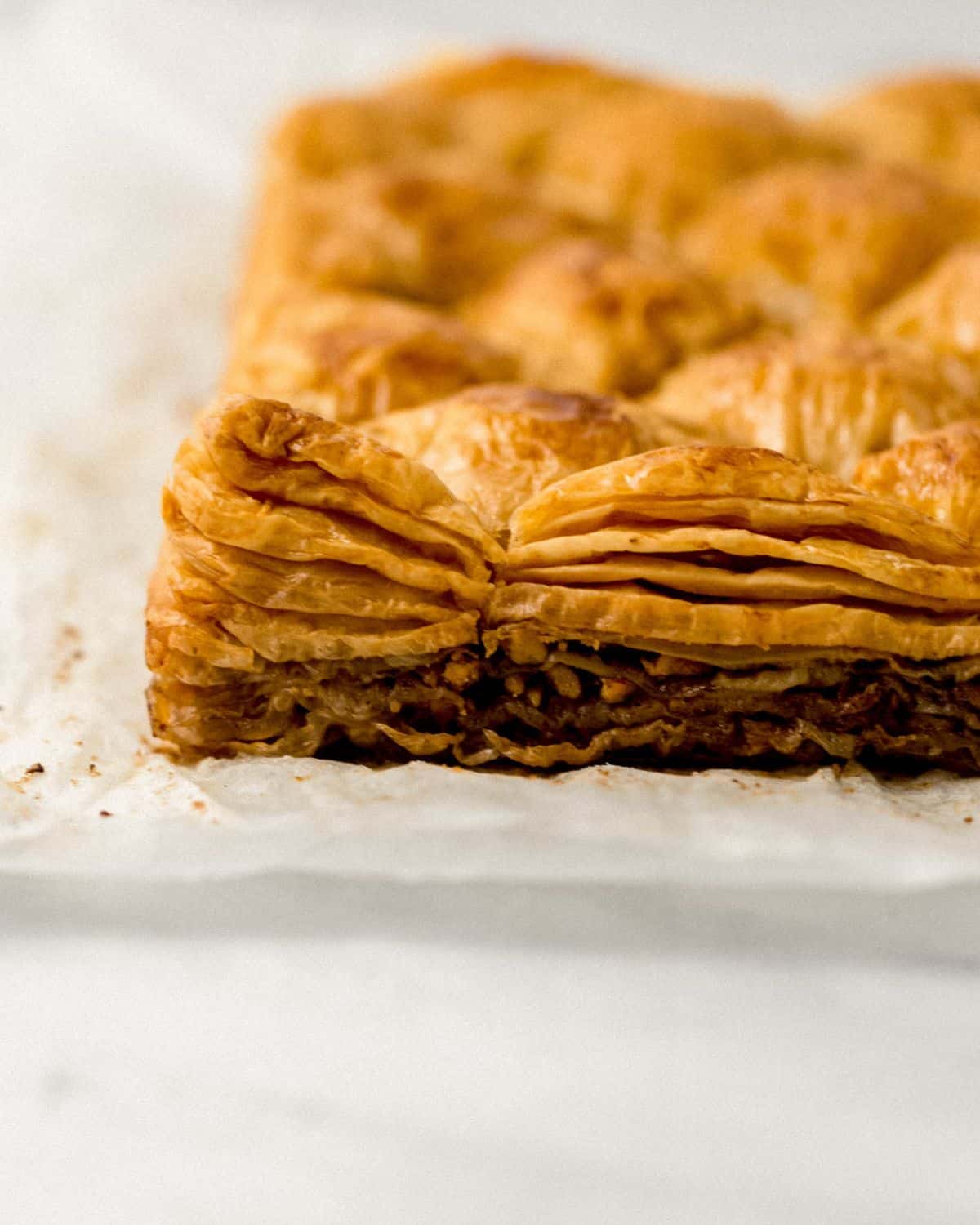
Order of Stacks Assembly
- Parchment paper on the bottom, topped with a layer of melted butter.
- 10 to 12 phyllo sheets, 2 sheets at a time, layered with butter in between every 2 layers.
- A layer of ⅓ of the walnut mixture. Topped with 2 sheets of dough and butter.
- Layer of ½ of the leftover walnut mixture. Topped with 2 sheets of dough, then butter.
- A layer of the leftover walnut mixture, topped with 2 sheets of phyllo dough, and then a layer of butter.
- Layer 2 sheets of phyllo dough, topped with a layer of butter until you run out of dough sheets.
- End with top layers of all the melted butter that is left in the bowl.

Recipe Tips & Tricks
- The best way to add the layer of melted butter is to tap around the edges of the baking pan with a generously buttered pastry brush first and then the ends of the phyllo dough. This will help to weigh the butter down and prevent it from moving around.
- Phyllo dough is thin and gentle, try to work with it with clean and dry hands for easier handling.
- Cover the sheets of phyllo dough with a damp paper towel or clean kitchen towel to prevent it from drying out and cracking. Try to keep it covered throughout the process.
- You may need to reheat (melt) the butter if you notice it is cooling and beginning to solidify in the bowl.
- Do not forget to cut the phyllo dough before baking with a sharp serrated knife. If you cannot make it all the way down to the bottom, then halfway is perfectly fine. Be careful with the dough while cutting.
- Try to make this recipe ahead of time and refrigerate it overnight if possible.
Storage Tips
Storage. Baklava can be stored covered or in an airtight container at room temperature for 2 to 3 days. It can also be stored in the refrigerator for a little longer about 5 to 7 days. Just allow it to come to room temperature before serving.
Freezing. This recipe for baklava freezes very well. The baked and cooled baklava can be added to a freezer bag or freezer-safe container and stored in the freezer for up to 3 months. Allow it to thaw in the refrigerator or at room temperature before serving it from the freezer.
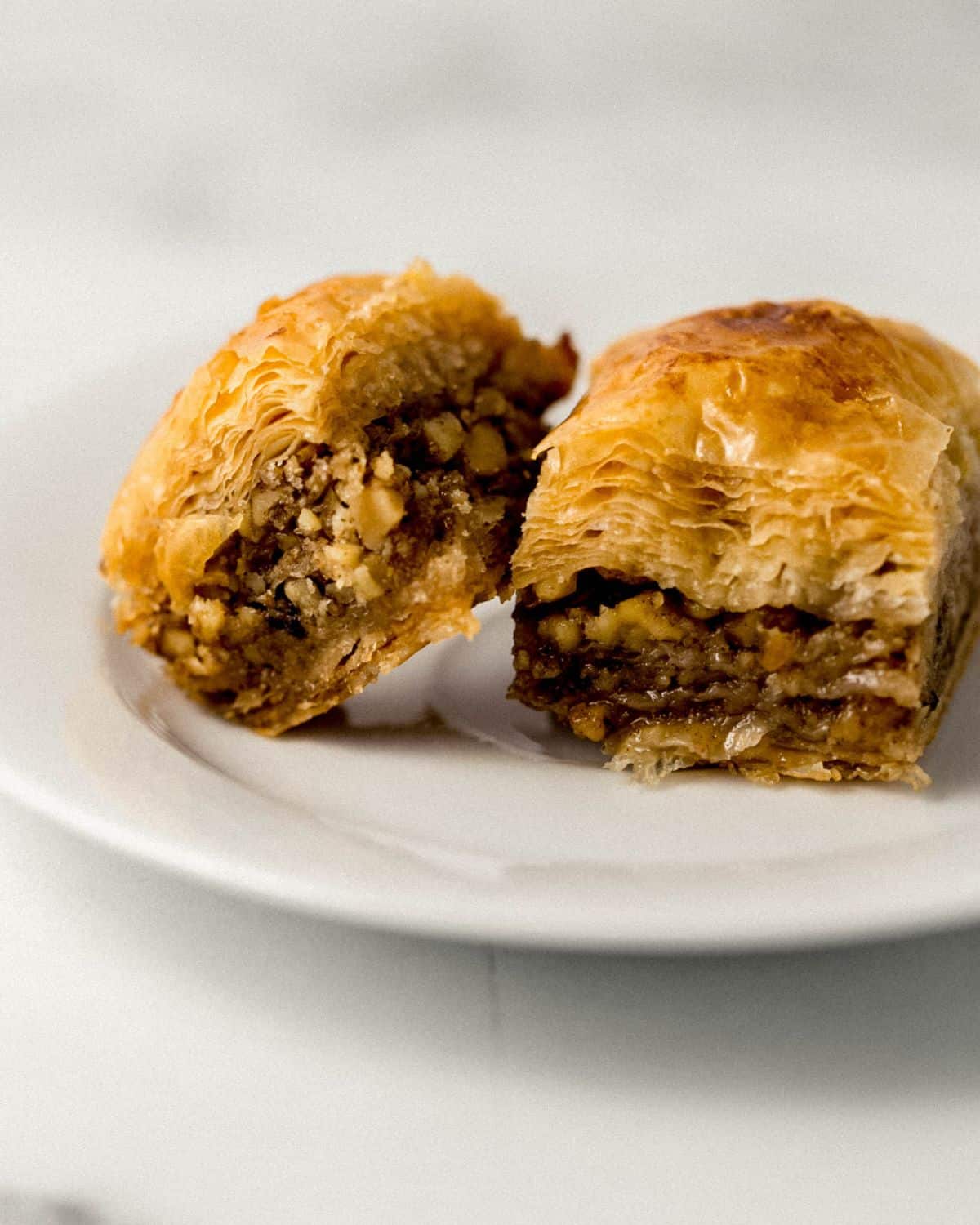
Want More Easy Recipes? Try These:
- Greek Potatoes
- Greek Chicken Salad
- Spicy Chickpea Gyros
- Sticky Buns
- Chocolate Delight Recipe
- Pear Walnut and Blue Cheese Salad
- Yum Yum Cake
Have any comments, questions, or other delicious ways to enjoy this Greek Baklava? Please share them in the comments below!
📖 Recipe
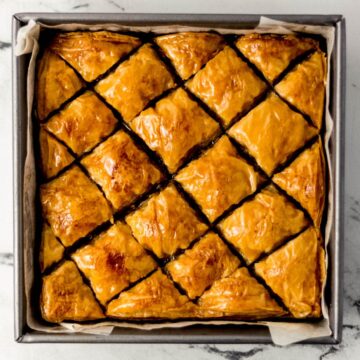
Easy Baklava Recipe
Equipment
- 1 8x8-inch square baking pan
- 1 Food processor
- 1 small saucepan
- 1 serrated knife
- Parchment paper
Ingredients
- ½ pound walnuts, chopped
- 6 tablespoons granulated sugar
- 1 teaspoon ground cinnamon
- ½ teaspoon lemon zest
- ½ pound phyllo dough, thawed
- ½ cup melted butter
- 1 cup water
- 6 tablespoons granulated sugar
- 1 tablespoon lemon juice
- 2 inch strip lemon rind (lemon peel)
- 6 tablespoons honey
Instructions
- Using a food processor add in the ½ pound walnuts and process them until they are about the size of a pea or smaller. Add the chopped walnuts to a large mixing bowl along with the 6 tablespoons granulated sugar, 1 teaspoon ground cinnamon, and ½ teaspoon lemon zest. Stir to combine.
- Melt the ½ cup butter and brush the parchment paper in the square baking dish with a thin layer of the melted butter. Grab two sheets of ½ pounds of phyllo dough and lay them on the bottom of the baking dish. Fold and tuck them to fit, it is fine for the dough to overlap on top of itself.
- Generously tap the edge of the dough with some melted butter, followed by the ends of the overlapping dough. This will prevent the dough from sliding around in the pan. Then brush the entire dough with melted butter before adding 2 more sheets of phyllo dough.
- Sprinkle the top of the buttered dough evenly with ⅓ of the nut mixture.
- Place 2 sheets of phyllo dough on top of the nut mixture and brush with melted butter. Add ½ of the nut mixture evenly on top of the buttered dough. Add 2 sheets of top, brush with butter, and add the last half of the nut mixture evenly on top.
- Top with 2 sheets of phyllo dough followed by brushing on a layer of melted butter. Continue this process of layering 2 dough sheets, followed by brushing with melted butter, until you have no more phyllo dough sheets or butter left. End the process with the last of the butter evenly spread over the top.
- Using a sharp serrated knife cut the baklava into small diamond shapes. It is important to cut the baklava before baking to make the process easier and for the syrup to get into all of the nooks and crannies. If you're unable to cut all the way down to the bottom, no worries getting halfway through is good enough!
- Place the baklava into the oven to bake for 25 to 30 minutes. It should be puffy and golden. Lower the heat to 300 degrees F. and continue baking for an additional 45 minutes.
- After 45 minutes, bake the baklava for another 15 minutes. Begin making the syrup mixture using a small saucepan on the stovetop over medium-high heat. Add the 1 cup water, 6 tablespoons granulated sugar, 1 tablespoon lemon juice, and a 2-inch piece of lemon rind (lemon peel). Stir to combine. Allow the mixture to come to a boil and reduce the heat to medium-low and allow it to simmer for 10 minutes. Stir in the 6 tablespoons honey and allow it to continue to simmer for 5 more minutes.
- Carefully remove the baklava from the oven after baking it for 1 hour and 30 minutes total. It should be puffy and lightly browned.
- Remove the lemon rind from the syrup mixture. Evenly pour the hot syrup over the top of the hot baklava. Allow it to cool to room temperature before placing it into the refrigerator to cool overnight or for at least 3 to 4 hours. Remove the baklava from the refrigerator. Use the edges of the parchment paper to remove the baklava from the baking pan. Grab a knife and finish cutting the baklava all the way down to the bottom. Serve and enjoy!
Notes
- The best way to add the layer of melted butter is to tap around the edges of the baking pan with a generously buttered pastry brush first and then the ends of the phyllo dough. This will help to weigh the butter down and prevent it from moving around.
- Phyllo dough is thin and gentle, try to work with it with clean and dry hands for easier handling.
- Cover the sheets of phyllo dough with a damp paper towel or clean kitchen towel to prevent it from drying out and cracking. Try to keep it covered throughout the process.
- You may need to reheat (melt) the butter if you notice it is cooling and beginning to solidify in the bowl.
- Do not forget to cut the phyllo dough before baking with a sharp serrated knife. If you cannot make it all the way down to the bottom, then halfway is perfectly fine. Be careful with the dough while cutting.
- Try to make this recipe ahead of time and refrigerate it overnight if possible.
Original post date 04/25/2014. Updated 02/24/2023 and 10/21/2024.

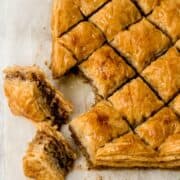
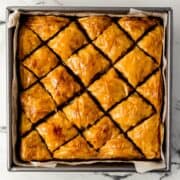
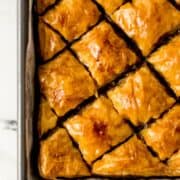
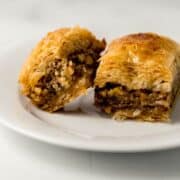
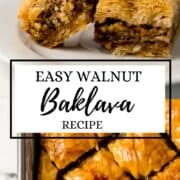
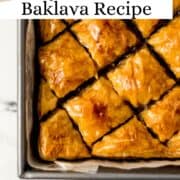
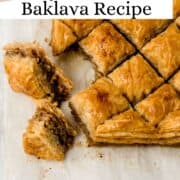
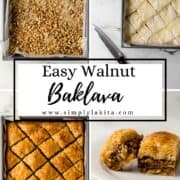
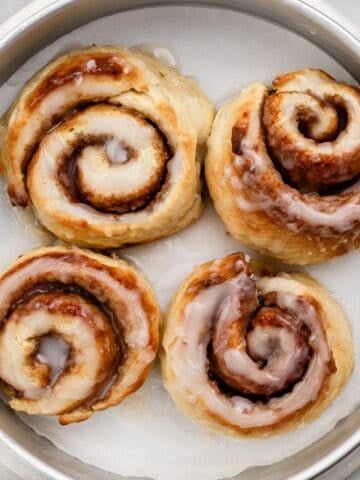
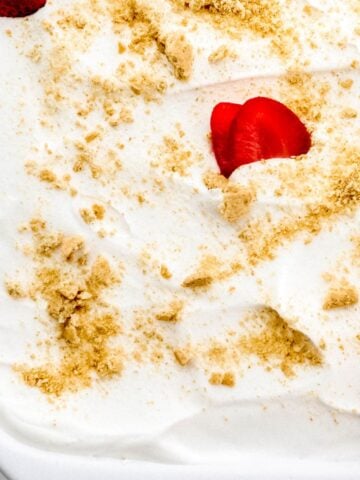
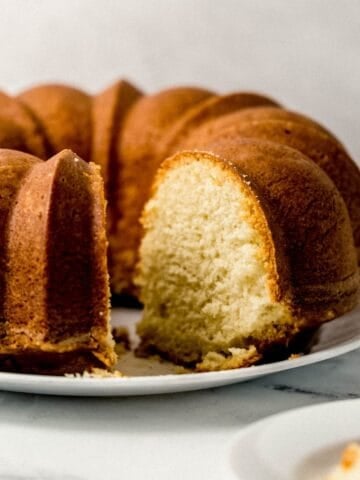
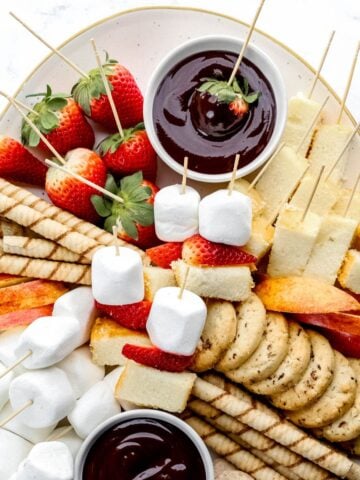
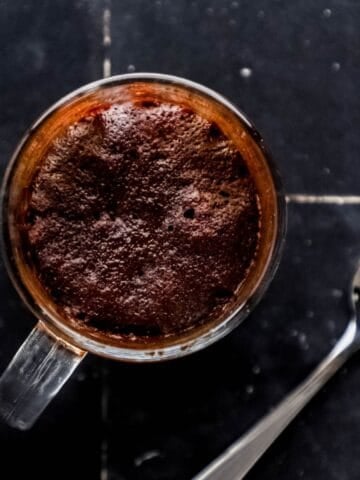
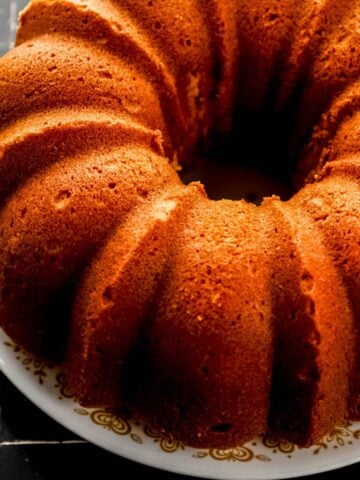
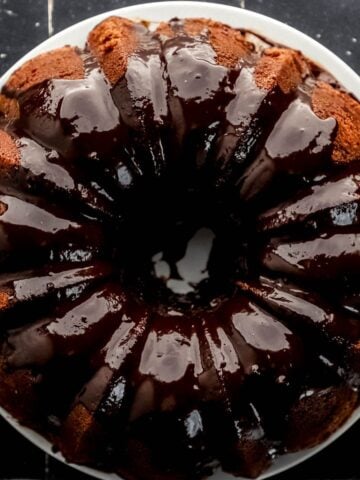
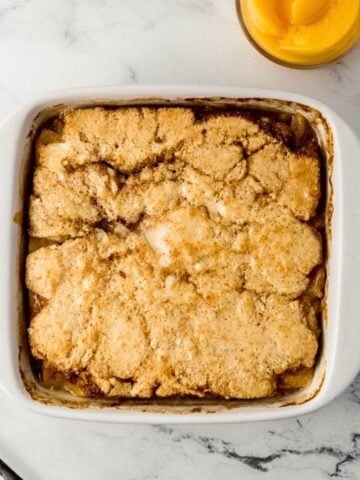
Leave a Reply